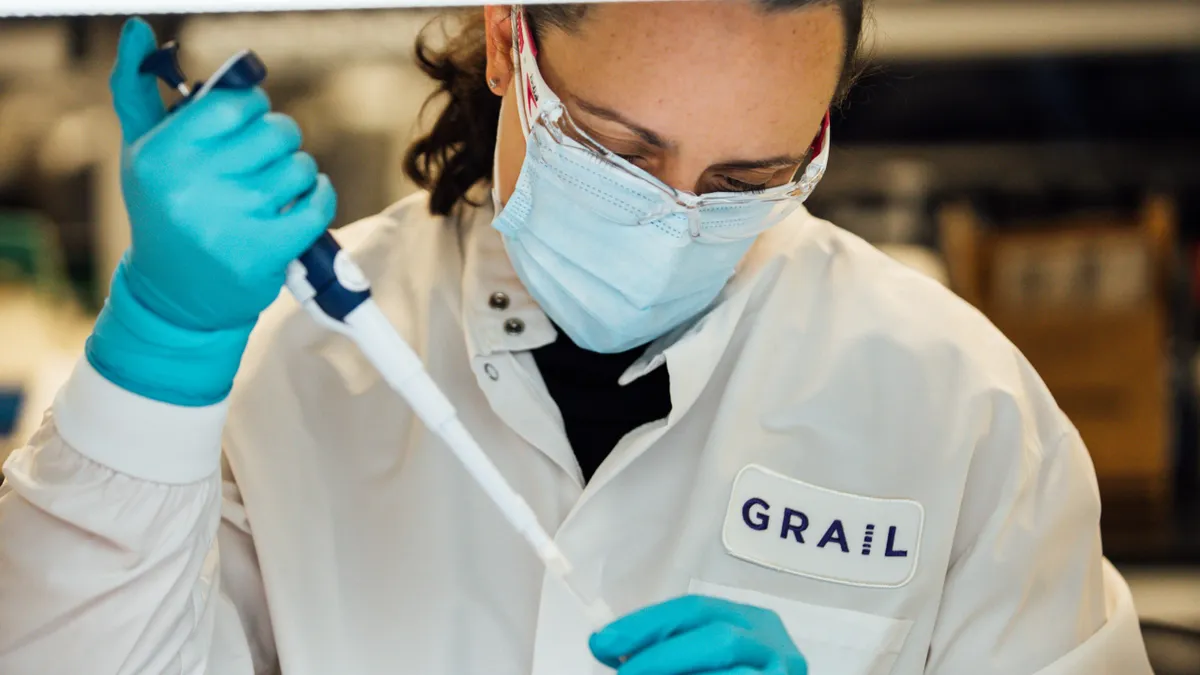With the speed and impact of innovation increasing rapidly, our institutions have struggled to keep up. For better or worse, rules and regulations have typically lagged behind the innovation frontier, responding only when a crisis or particular incident highlights a new challenge to be managed or risk to be mitigated. This dynamic isn’t specific to healthcare—just think back on all of the questions raised in the last few years with Tesla’s autopilot car crashes to see the parallels. Regardless of industry, for those innovators on the cutting edge, this creates an environment of regulatory uncertainly that is inherently risky for the companies that blaze forward assuming a specific regulatory approach will be adopted by the relevant authorities. The more disruptive the technology, the more likely it is that such an environment will exist.
With cutting-edge medical technologies today—including AI-based algorithms that theoretically can reduce HCP involvement in various aspects of patient care—there often isn’t a go-to approval process laid out, an existing CPT code or a well-understood assignment of liability. Let’s look at a recent example of how one medtech innovator is pushing through the ambiguity.
IDx’s cutting-edge AI solution
After years of effort and back-and-forth, last year the FDA cleared IDx-DR as the first autonomous artificial intelligence diagnostic, indicated to screen diabetic patients for an eye disease called diabetic retinopathy. This disease is the leading cause of preventable vision loss and blindness among working-age adults, and it’s a significant concern for the more than 30 million people in the U.S. currently living with diabetes. Annually, it’s estimated that 24,000 Americans go blind from diabetic retinopathy. Despite these statistics, approximately 50% of diabetics do not see an ophthalmologist on an annual basis to get the recommended screening for a disease where early detection is key. It’s a question of the right patient seeing the right doctor at the right time; for many diabetics living in rural parts of the country with few ophthalmologists, access is a significant hurdle to overcome.
Enter IDx-DR, a device-based, AI-driven solution that allows primary care providers (PCPs) to screen for diabetic retinopathy. The primary care provider takes images of the patient’s eyes during a routine visit and uploads them to IDx’s cloud server. Within a few minutes, the software can determine if “more than mild” diabetic retinopathy is detected, and the PCP can refer the patient to a specialist.
As is the case here, part of the promise of AI medical technologies is the potential to disrupt our current healthcare system, introducing efficiencies and improving efficacy. This clearance allows PCPs to screen for a disease that until recently has been within the purview of specialists, changing the referral dynamic between diabetics, their PCPs and ophthalmologists. From the patient side, hopefully this will have the two-fold impact of improving the annual screening rate above the current 50% mark, as well as reducing cost to the overall system as the number of referrals declines. For diabetics who don’t otherwise require annual ophthalmologist visits, retinopathy screening can simply be folded into a routine annual physical with their PCP, removing the added cost (and hassle) of a specialist visit. Additionally, by increasing the screening rate, hopefully more cases will be detected early on, reducing downstream care costs. For ophthalmologists, this will hopefully increase availability to see more complex cases, leading to a more efficient use of resources. While the broader health economics arguments for IDx-DR remain to be made, there’s reason to believe that the overall impact on the system will be positive
Even though the FDA’s clearance gave IDx the ability to market its product in the U.S., the company faced a classic innovator’s dilemma of how to sell a game-changing technology in a market that operates under a different paradigm, in this case with respect to liability. Under the status quo, physicians typically carry malpractice insurance to protect themselves in our litigious society. One issue that remains top of mind with AI is who should be responsible if there is a problem, which in this case would be a false negative. Does a physician need to review and confirm the data, and take on responsibility for the decision? If that’s the case, it limits what can be offloaded to AI, and which types of physicians (PCPs vs. specialists) can ultimately confirm what the software suggests. Because IDx-DR is autonomous—meaning that it does not require physician confirmation of the results—the company has taken on the responsibility and liability for the accuracy of the screening results provided (that is, whether a referral is required for a definitive diagnosis and treatment by an ophthalmologist). While this may seem like a small change, it’s a radical shift from the status quo.
While this FDA clearance has empowered PCPs to better care for their diabetic patients, there are also broader-reaching implications for AI innovators. Here are a few key learnings that medtech innovators should take away from IDx-DR’s success:
- Find a niche. While many coming into this from the technology side are used to building for the masses, the easiest (and most meaningful) applications in our fragmented healthcare system are point solutions. The primary problem IDx-DR solves is insufficient screening of diabetics for retinopathy. Importantly, the company isn’t trying to bring a broad suit of eye care issues into the PCP’s office, or tackling the larger issue of providing the definitive diagnosis. While narrowly defining your use case is fairly standard in much of healthcare, it isn’t second nature for those tech innovators looking to enter the space. Don’t try to be everything to everyone—just solve one problem really well.
- Understand your customers’ drivers and barriers to purchasing. While IDx-DR’s technology definitely has a cool factor—not to mention the distinction of being the first autonomous AI-based screening technology—adoption would have been significantly slower had the company not understood the inherent fear of malpractice suits that is too often a topic in medicine these days. By creating a liability shield for PCPs using the device, IDx addresses not only concerns about managing diabetic patients’ health but also administrative and economic concerns.
- Engage the FDA early and often. The FDA is currently developing a new regulatory framework for reviewing medical devices that uses more advanced AI algorithms, addressing the regulatory conundrum of how to assess software that has the potential to continuously adapt in real time to optimize outcomes. Given that the thinking is evolving in this area, innovators should directly engage the FDA to understand the path to market and minimize the risk relating to that particular uncertainty. Luckily for some, IDx has provided a template that others with similar types of algorithms can follow.
IDx-DR’s clearance represents a step forward for diabetics and their PCPs, as well as a broader shift in acceptance of AI by the FDA as the agency itself becomes more comfortable with new technologies. Looking forward, we can expect to see more AI-driven solutions not only coming to market as clinical decision assistants but also as true diagnostic screening devices. Ultimately, it’s a question of risk tolerance and conservatism: Do you gradually innovate (adding more blind spot detectors to the car) or introduce a bold but more risky offering (autopilot)? We all know which approach Tesla would take—the question is which way medtech will lean as it pushes the proverbial envelop in more and more ways.
This post is the second in a multi-part series on how the rules of the road are changing in medtech, and the implications on commercial strategy. To learn more about the changing scenario in medtech, read our first post, “The Rise of Patient Stakeholders: What CMS’s Shared Decision-Making Policies Mean for Medtech”.
Author Information

Kate Templeton, Strategy Insights & Planning Manager

Sundeep Karnik, Principal










